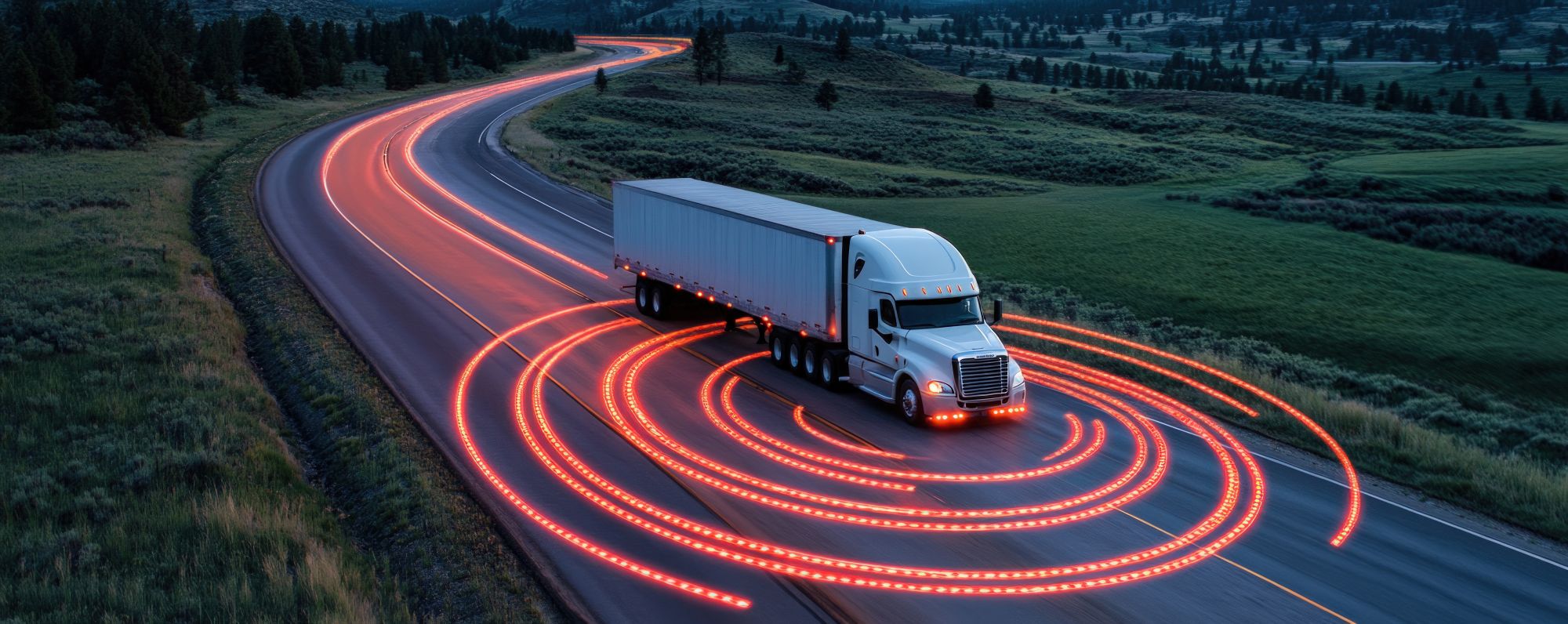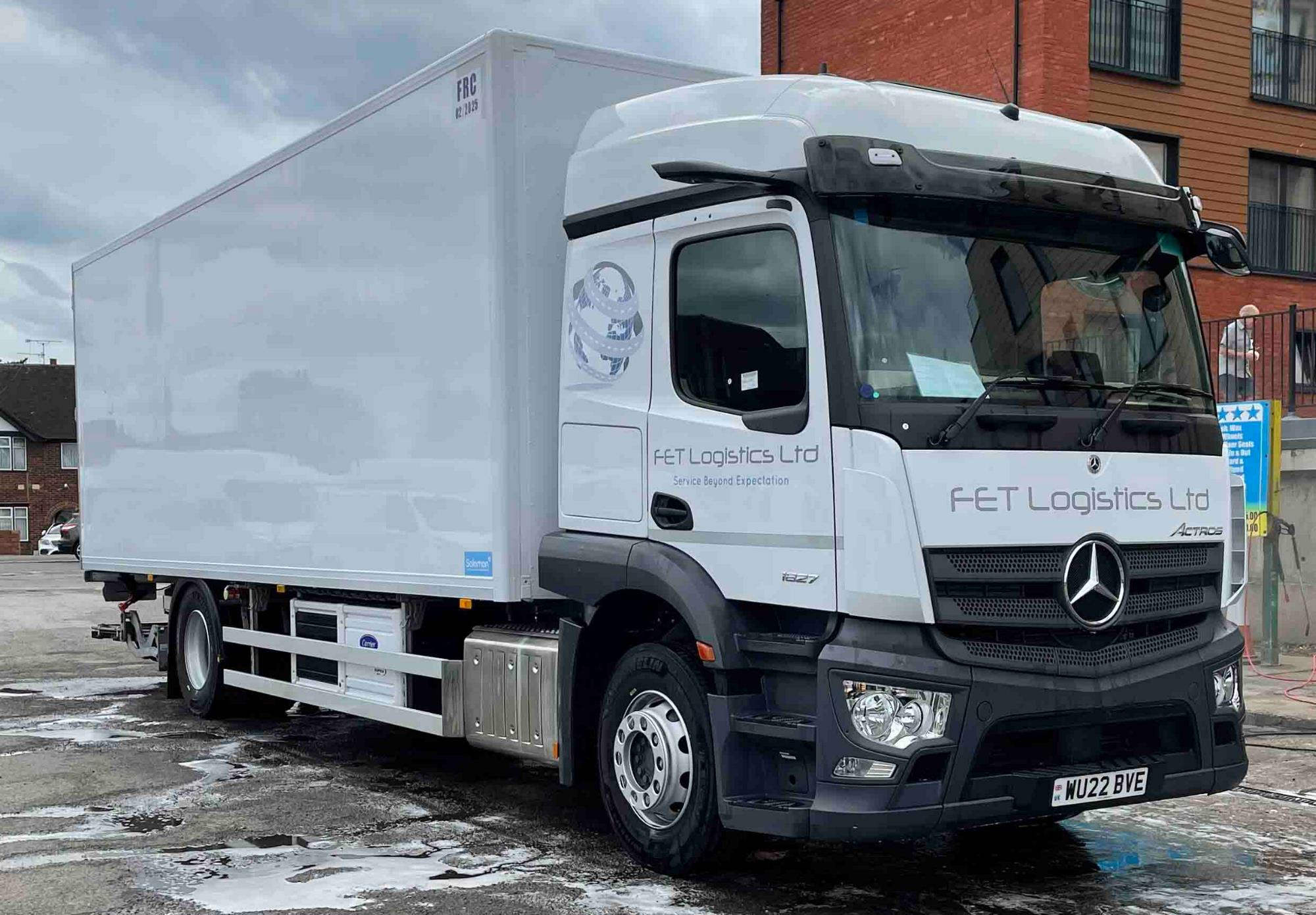
Susie Jones
Autonómne nákladné vozidlá: Rozpletenie cesty pred nami
Vytvorené: 16. 05. 2025
•
Aktualizované: 23. 05. 2025
Autonómne nákladné vozidlá - pre niektorých odstrašujúca predstava, ale zrejme budúcnosť logistického priemyslu. S technologickým pokrokom v tomto odvetví je perspektíva čiastočne alebo úplne autonómnych vozidiel, ktoré budú doručovať váš tovar, vysoká. V skutočnosti by to podľa vlády Spojeného kráľovstva mohlo byť už v roku 2026, keďže v máji 2024 sa stal zákonom zákon o automatizovaných vozidlách (AV).
Čo sa však stane, keď sa autonómne nákladné vozidlo dostane do nehody? Kto nesie zodpovednosť? V tomto blogu sa pozrieme do sveta autonómie, ako by mohla ovplyvniť sektor mobility, kto je zodpovedný za nehody a čo si o tejto zmene myslia vodiči.
Aké sú rôzne úrovne automatizácie?
Existuje šesť úrovní automatizácie riadenia:
Úroveň 0 - Žiadna automatizácia. Všetky úlohy riadenia vykonáva človek.
Úroveň 1 - asistencia vodiča. Vozidlo je vybavené jedným automatickým systémom.
Úroveň 2 - čiastočná automatizácia. Vozidlo môže vykonávať riadenie a zrýchľovanie. Človek však stále monitoruje všetky úlohy a môže kedykoľvek prevziať kontrolu.
Úroveň 3 - podmienená automatizácia. Vozidlo dokáže vykonávať väčšinu jazdných úloh. Stále sa však vyžaduje ovládanie človekom.
Úroveň 4 - vysoká automatizácia. Vyžaduje sa geofencing a vozidlo môže vykonávať všetky jazdné úlohy za určitých okolností. Možnosťou je ovládanie človekom.
Úroveň 5 - Úplná automatizácia. Vozidlo vykonáva všetky jazdné úlohy za všetkých podmienok. Nevyžaduje sa žiadna ľudská pozornosť ani interakcia.
Ako fungujú autonómne nákladné vozidlá?
Senzory, kamery a umelá inteligencia umožňujú autonómnym nákladným vozidlám jazdiť samostatne. Pokročilé programy rozhodujú namiesto ľudských vodičov.
Problémy, ktorým by mohlo odvetvie čeliť
Právne aspekty - Kto je zodpovedný za nehody? Je to vodič, jeho zamestnávateľ alebo údržbárska spoločnosť? Tejto otázke sa venujeme nižšie.
Infraštruktúra - Naše existujúce cesty sú stavané pre svet benzínových motorov. Preto sa musí infraštruktúra modernizovať alebo vymeniť, aby podporovala flotily samojazdiacich vozidiel, čo si vyžaduje peniaze a značnú politickú vôľu.
Spoločenské zmeny - bude potrebné zmeniť aj postoje verejnosti. Perspektíva vozidiel s umelou inteligenciou mnohých odrádza, pretože sa obávajú o bezpečnosť, sledovanie ciest a právne šedé oblasti týkajúce sa dopravných nehôd.
Bezpečnosť - systém, ktorý sa spolieha na digitálne siete, je zraniteľnejší voči kybernetickým hrozbám.

Čo si myslia vodiči nákladných vozidiel o autonómnych nákladných vozidlách?
Bezpečnosť autonómnych nákladných vozidiel je horúcou témou diskusií v tomto odvetví, pričom mnohí diskutujú o tom, či je táto technológia na spoľahlivej úrovni, aby sa dokázala vyrovnať s nepredvídateľným počasím a rozpoznať prekážky - čo znepokojuje vodičov nákladných vozidiel na stránkach sociálnych médií SNAP:
"Pri najmenšom daždi moje vozidlo stráca všetky automatické funkcie, AEBS a tempomat. V žiadnom prípade sa nákladné vozidlá nebudú môcť v dohľadnej dobe riadiť samé bez vodiča."
"Zabije to viac ľudí na cestách a spôsobí ďalšie kolóny. Len sa zamyslite, aká spoľahlivá je elektronika vo vašom vozidle Euro 6. Tí istí ľudia vyrábajú autonómne nákladné vozidlá."
Právne aspekty - kto je zodpovedný za nehody?
V prípade nehody sa zodpovednosť môže presunúť medzi vodiča a výrobcu. Súd musí určiť, či bola nehoda spôsobená technickou chybou, nedostatočnou údržbou alebo chybou vodiča.
Zodpovednosť výrobcu
Výrobca je zodpovedný v nasledujúcich prípadoch: - Porucha snímača
Chyby softvéru
Nedostatočné opatrenia kybernetickej bezpečnosti
Nedostatočné testovanie
Zodpovednosť vodiča/vozového parku
Vodič autonómneho nákladného vozidla môže byť zodpovedný za nehodu, ak zanedbá potrebný servis alebo údržbu potrebnú na správnu prevádzku vozidla - dalo by sa tvrdiť, že táto zodpovednosť by sa mohla vzťahovať aj na manažérov vozového parku.
Napriek tomu je medzi ľuďmi v sektore mobility stále určitý zmätok. Na našich stránkach sociálnych médií sme sa opýtali vodičov nákladných vozidiel, kto by podľa nich niesol zodpovednosť v prípade nehody s autonómnym vozidlom. 51 % vodičov si myslí, že zodpovedný by bol vodič, 37 % navrhuje výrobcov automatizovaných nákladných vozidiel a 12 % verí vývojárom softvéru.
Je zrejmé, že kým sa autonómne nákladné vozidlá natrvalo stanú súčasťou našich ciest, je potrebné, aby si to účastníci tohto odvetvia ešte vyjasnili.
Ako vyzerá budúcnosť?
SNAP sa vo svojej revidovanej kampani TruckPark of the Future zaoberá budúcnosťou sektora mobility. S technologickým pokrokom budú autonómne vozidlá zohrávať v tomto odvetví významnú úlohu, pričom je 50 % pravdepodobnosť, že stroje by mohli v nasledujúcich 120 rokoch prevziať všetky pracovné miesta pre ľudí.
Ako sa však vysporiadajú s najnebezpečnejšími diaľnicami v Európe?
Šoférovanie nákladného vozidla je viac ako len sedenie za volantom - často ide o navigáciu v neustále sa meniacich a nepredvídateľných podmienkach na cestách. Vynára sa otázka, či by autonómne nákladné vozidlá mohli zvládnuť niektoré z najhorších ciest v Európe. Zo svojej najnovšej kampane Hazardous Highways SNAP identifikoval najnebezpečnejšie cesty v Európe, pričom výsledky ukázali, že najväčšie obavy vyvolávajú Bulharsko, Litva a Česko.
Dalo by sa tvrdiť, že autonómne nákladné vozidlá budú čeliť výzvam pri pokuse o navigáciu na niektorých z týchto ciest bez ľudskej interakcie. Situáciu by mohla skomplikovať obmedzená presnosť GPS, rušenie senzorov a nedostatok konzistentnej infraštruktúry.



